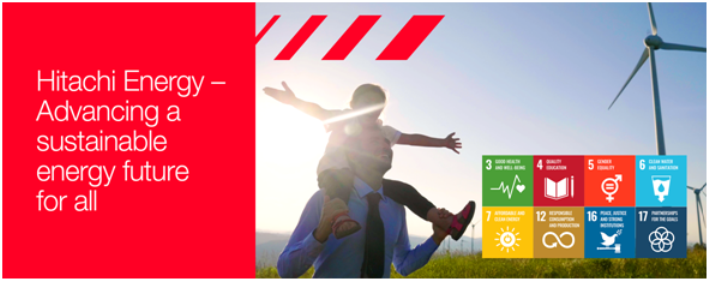Hitachi Energy announced that it has achieved the first-step target set out in its “Sustainability 2030” Plan – the use of 100 per cent fossil-free electricity in its own operations.
The company is driving towards being carbon-neutral in its own operations by 2030, in line with its Purpose, ‘Advancing a sustainable energy future for all’.
“By achieving 100 per cent fossil-free electricity in our own operations, we have reduced our CO2 equivalent emissions by over 50 per cent compared to 2019,” says Claudio Facchin, CEO of Hitachi Energy. He continued, “The Net Zero challenge is global and it’s about acting now, innovating and collaborating across countries, industries and societies. Together with customers, partners, and all stakeholders, we are advancing the world’s energy system to be more sustainable, flexible and secure.”
The targeted 50 per cent reduction achieved ahead of plan will amount to approximately175 kilo tonnes of CO2e per year, equivalent to removing over 35,000passenger cars off the road.
To achieve 100 per cent fossil-free electricity in its own operations– and in support of the Hitachi Group’s carbon-neutrality goal – the company has pursued a number of pathways including supporting projects to generate its own fossil-free electricity, such as installing solar roof panels combined with “e-mesh” digital solutions for distributed energy resources maximizing energy efficiency and minimizing CO2 emissions. In its Zhongshan factory in China, the company is generating nearly 20 per cent of its total energy consumption from solar panels. In its first year of operation, the power generated at the factory is expected to reach 1,510 MWh, contributing to the reduction in annual carbon emissions by more than 1,000 tonnes.
Also read: Hitachi Energy Automates Power Distribution For New Kolkata Metro Line
Green tariffs
To achieve 100 per cent fossil-free electricity, Hitachi Energy has also switched to green tariffs, bought Energy Attribute Certificates (EACs), and signed Power Purchase Agreements (PPAs) across its operations and facilities in 90 countries.
Looking ahead, Hitachi Energy is continuing to invest in its journey towards carbon-neutrality by further increasing energy efficiency, as well as electrifying its own operations. In Ludvika, Sweden, the company is now using 100 per cent renewable electricity generated from hydropower and from solar panels to support its operations. Ludvika, which is one of Hitachi Energy’s largest production facilities, has gone beyond tackling its electricity supply and is now close to removing the use of all fossil fuels from the whole of its operations.
Sustainability 2030 Plan
Through its Sustainability 2030 plan and targets, the company reinforces its commitment to accelerating actions driving business in a sustainable way. Based around four pillars – Planet, People, Peace, and Partnerships – the strategy draws from the UN’s Sustainable Development Goals (SDGs), with specific focus on the following eight: 3 (Good health and well-being), 4 (Quality education), 5 (Gender equality), 6 (Clean water and sanitation), 7 (Affordable and clean energy), 12 (Responsible consumption and production), 16 (Peace, justice and strong institutions); and 17 (Partnerships for the Goals). In line with these SDGs, each pillar has corresponding targets that drive the business to contribute social, environmental, and economic value.
Featured photograph sourced from Hitachi Energy

